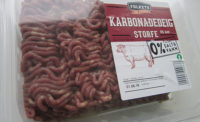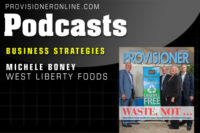Supplier's Perspective
Global meat packaging: Investing in a waste-free future

With consumers demanding more protein at a record pace, meat consumption continues to be on the rise. Never in our history have we consumed more red meat, pork and poultry than we are now.
On top of this, world exports of agricultural products have increased by 70 percent. The United States remains the top exporter of food products around the globe with export estimates of 17 billion pounds of beef worth $18 billion.
As the supply chain grows in complexity, we have a responsibility to make sure we are prepared by 2050 to feed a population of nearly 10 billion within environmental limits. When 20 percent of meat produced globally is lost or wasted each year, adding up to the equivalent of 75 million cows, it is critical that we work together to protect this precious resource and ensure it is delivered safely.
Consumer preferences
Compounding the challenge are the shifts we see in consumer purchasing and eating habits. According to the Goldman Sachs 2018 Outlook: Americas Packaging, Paper & Forest Products, Waste report, e-commerce and consumers’ changing food preferences are expected to dominate our industry in the coming years. Currently a $450 billion market in the U.S., e-commerce is increasing 15 percent annually, with growth expected to continue. To meet e-commerce demands, we must devise ways to efficiently, economically and safely deliver perishables across hundreds — even thousands — of miles.
Simultaneously, Millennials’ preference for healthier foods is driving another purchasing shift. With this group estimated to spend an incremental $24 billion on fresh, packaged food through 2027, finding ways to meet the demand for convenience-driven meat packaging options while continuing to deliver breakthrough, sustainable solutions is vital.
Investing in innovation, sustainability and our future
The industry’s increased focus on protecting the environment and offering consumers more sustainable options is the driving force behind the demand for more sustainable materials and practices.
At Sealed Air, we’re advocating for collective action through partnerships and actively engaging with multiple organizations to help reduce littering of packaging materials, significantly improve recycling infrastructure and invest in new solutions to recover value from waste.
Preserving our planet’s natural resources is a global concern and one that we can also affect. Essential food packaging plays a critical role in reducing food waste and its impacts on the environment. According to FAO’s Food Waste Foodprint: Impacts on Natural Resources report, the global effect of processing wasted food equals about 3.3 billion tons of carbon dioxide.
It’s imperative that we collaborate to meet these challenges using all of the resources available to us. Investments in areas such as digital imagery, remote monitoring and automation systems and data analysis can help us build a stronger food supply chain that can overcome waste hurdles at every point.
Together, we must also continue to develop sustainable high-performance materials including plant-based options that can prevent the spoilage of meat and other food products. We can reduce our impact on the environment and benefit society by bringing new innovations to the table that help prevent food loss, decrease waste in our operations, and help set the standard for a healthy, sustainable future. This is a return on investment that we can all get behind, especially if we can work together to make it happen. NP
Looking for a reprint of this article?
From high-res PDFs to custom plaques, order your copy today!






